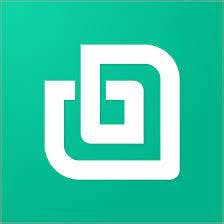- Valuation Model
- Expert Interviews
- Founders, funding
Which is a better strategy for offering financial services & products: Starting with SaaS tool to build a network, or starting with a marketplace?

Matt Brown
Co-founder at Bonsai
I think it's very hard to do both of those and you have to be quite clear early on whether you ultimately aspire to be a pure play tool with financial products or a marketplace. There's a pretty significant distinction there, which is with the marketplace you're solving what is often one of the largest challenges for these businesses, which is effectively lead generation.
If I'm a brand new designer, I have no network, I have no portfolio, Upwork is incredibly powerful for me because they help bring me clients. That's why their take rate is much higher than just a generic invoicing tool or whatever it is. That lead generation is incredibly powerful. I think that that can be attractive.
An entrepreneur may look at that take rate and say, ‘Oh, that's, that's very interesting,’ and there are a lot of opportunities to upsell and add on financial and SaaS products there. I think the challenge there is then you effectively double the number of customer personas that you have to serve.
Let's use Bonsai as an example. Bonsai just serves freelancers, and so all teams, whether they're working on financial products, whether they're working on the SaaS products or whatever it is, just focus on freelancers. There are some aspects of a client experience, but the person that pays us, that we make money from, that we're incentivized to help, is the freelancer.
When you get into a marketplace, you have to balance that supply and demand, and both of them are important–it can be a zero sum sort of set of product decisions that you need to make at some point, where we're going to do something that's going to benefit the buyer to the detriment of the seller, or the other way around. They're very, very different skills: Building a marketplace is a very kind of different skill and so that's the first thing that I'd say.
Assuming you recognize that, often it's one or the other and it's hard to kind of cross paths there, I do think a lot of the same opportunities or kind of benefits of adding financial products to pure SaaS or pure marketplaces, are there and are very powerful. I'm sure this is not a new concept, I'm sure we didn't invent it, but one thing I think a lot about is payments as a product. Oftentimes folks think of payments just as like I'm moving money from A to B, but there are a lot of other things that you can do with payments, or the “jobs to be done” with payments, both that benefit the user and are monetizable to the platform.
One example that's pretty popular now is faster payouts or instant payouts. Maybe I've done some kind of work and the card networks or bank rails being what they are, there's some delay in receiving those funds. For a fee, a lot of platforms starting with consumer platforms like Venmo or Square Cash will accelerate those payouts to you for a fee. That's one thing that is, I'm sure, popular and very powerful both on marketplaces and individual tools that have embedded payments.
Other things related to that are variations on credit, whether it's merchant cash advance or some version of invoice factoring or things like that. Again, the shapes of those products look very different depending on whether it's a marketplace or whether it's a pure play tool. Just giving people access either to their money earlier or money in advance, and on the buyer side, maybe some concept of credit or an installment, that is very powerful. It doesn't work for every single case. As a rider, I'm not going to pay for an Uber rides in installments or something like that, but if I'm hiring a design agency to do a $50,000 project, it's probably pretty compelling for me to split those payments up over time.
Bonsai is an all-in-one freelancing solution for creative professionals.
